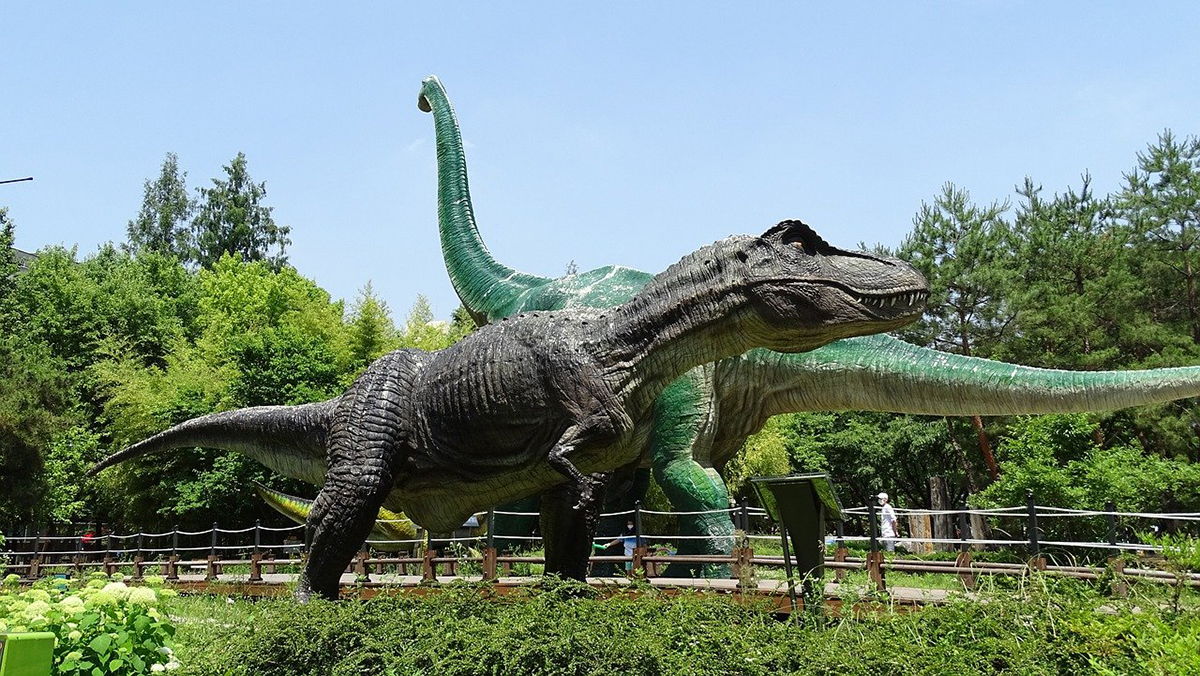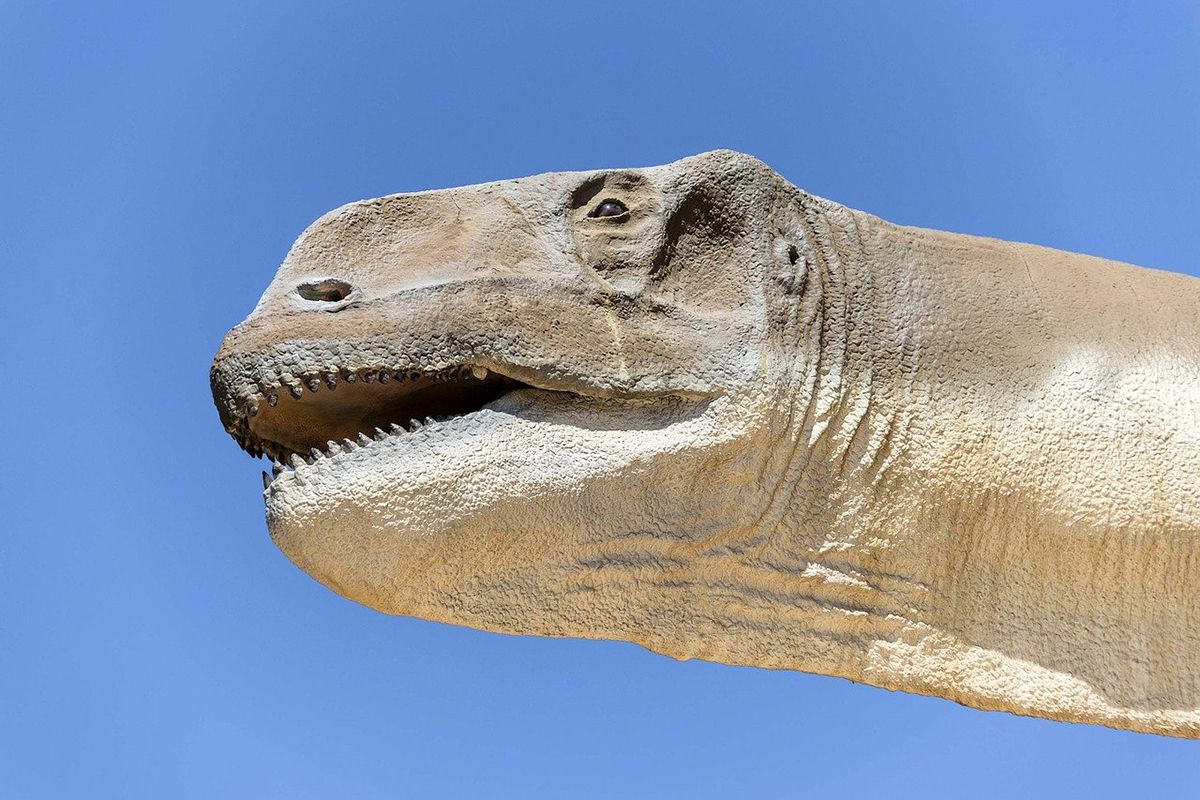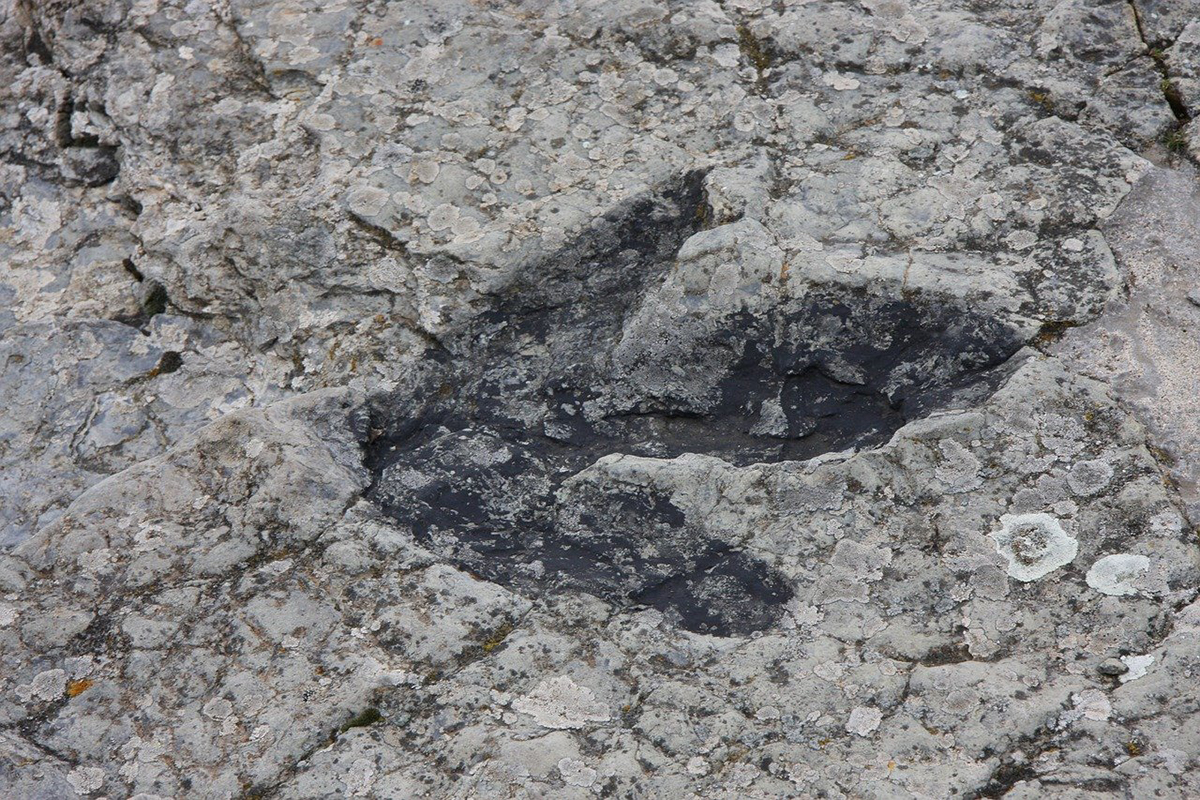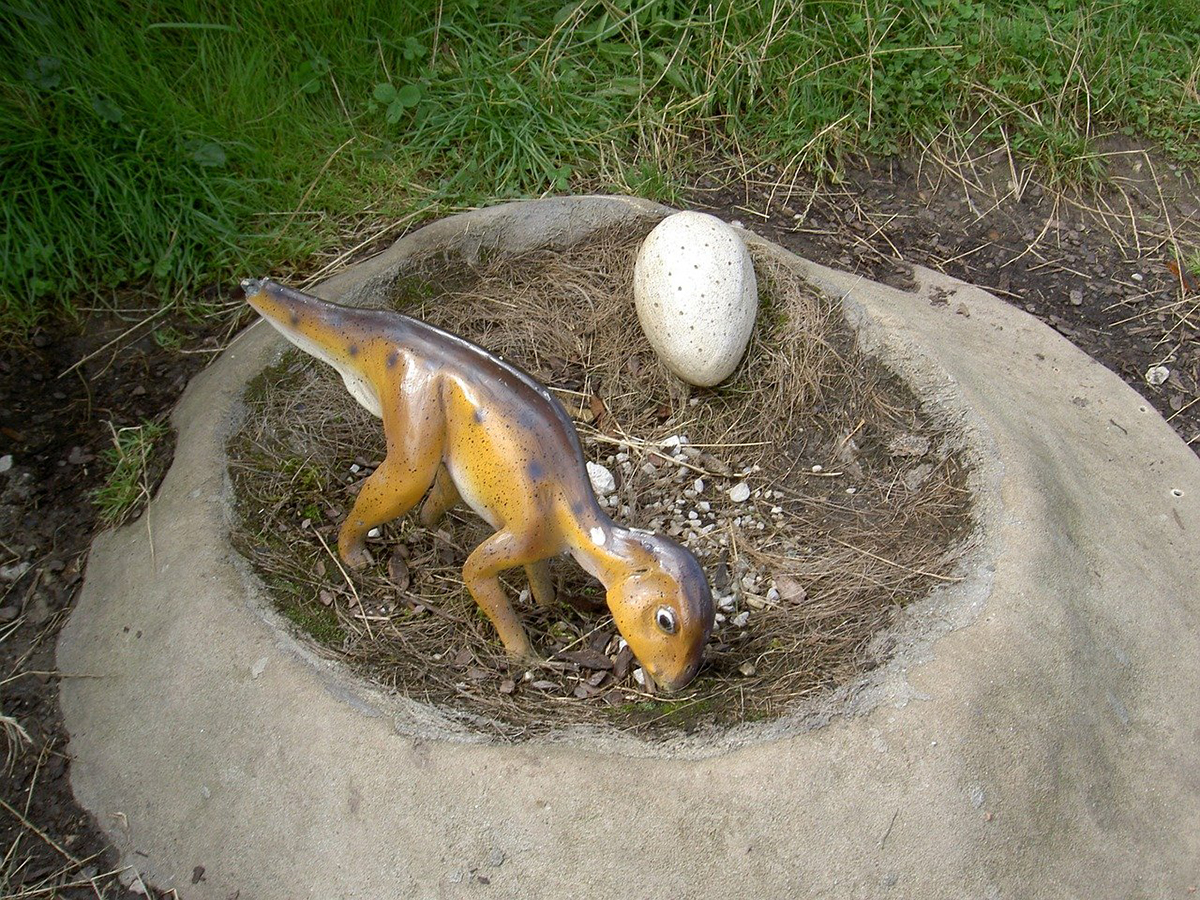
Spain, like other countries, had its own fauna millions of years ago, including dinosaurs. Many of them have been discovered in the Iberian Peninsula, and there are even sites, routes and museums where the most fans can enjoy visiting these information points about dinosaurs in Spain.
In this article you will find some of the most representative dinosaurs that have been found in Spain, as well as museums and routes with which you can learn and enjoy them.
Dinosaurs in Spain: Species

This list is made from Dinosaurs whose fossil remains were found in Spain. Among them are both carnivores and herbivores, and even some aquatic reptile.
Aragosaurus ischiaticus, Turiasaurus riodevensis and Iguanodon galvensis
At the end of the 80s, bones of Aragosaurus ischiaticus were found in Galve, Teruel. It was the first dinosaur to be defined in Spain and promoted Spanish paleontology in recent decades. Since that discovery, a large number of fossil remains have been found in the same province, most of which belonged to the Upper Jurassic. Among them, another new species also stands out, called Turiasaurus riodevensis, which was the largest dinosaur that existed in Europe. It had a length of about 30 meters and its weight ranged from 20 to 40 tons. Thanks to the great influx that Dinópolis has in Teruel, it has been possible to finance more research in the area and it was relatively recently that a "nursery" of a new species was found: Iguanodon galvensis.
Iguanodon bernissartensis
Another of the places where the first dinosaur bones have been found in Spain is Morella, in Castellón. There, in 1872, they identified some fossil remains belonging to Iguanodon bernissartensis. It is one of the most famous European dinosaurs of the lower Cretaceous. In the Temps Museum of Dinosaurs in Morella there is a life-size reconstruction of this animal.
Concavenator corcovatus
In Cuenca another dinosaur was also discovered and they baptized it "Pepito". It is the most famous in the province and belongs to the species Concavenator corcovatus, which means "Humpbacked Hunter from Cuenca". It owes its name to a bump on its back whose function remains a mystery.
[related url=»https://infoanimales.net/dinosaurs/ichthyosaurus/»]
Ichthyosaur, pterosaurs and stegosaurs
Regarding the discoveries of dinosaurs in Spain, Asturias stands out for its so-called "Dinosaur Coast". There, The last complete skeleton found is that of the Ichthyosaur, a dolphin-like marine reptile. However, this area stands out for its collection of footprints and is considered the third best in the world for them. There are more than 500 footprints discovered in Asturias, among which those of pterosaurs, which are flying reptiles, and those of stegosaurs stand out. If we want to see these traces in situ, we can visit any of the nine sites found on the coast.
Demandasaurus darwini, Arcanosaurus ibericus and Larechelus Morla
During the Cretaceous, several rivers crossed the current province of Burgos, so it is not surprising that many dinosaurs lived in that area. For this reason, remains of different species have been found. Among them is the Demandasaurus darwini, which was baptized with this name in honor of the Burgos Sierra de la Demanda and Darwin. Another discovery was the Arcanosaurus ibericus, which literally means "mysterious reptile of Iberia". A land tortoise was also found, which they named Larechelus Morla, in memory of the gigantic tortoise that appears in the movie "The Neverending Story".
Arenysaurus ardevoli and Blasisaurus canudoi
There are only two locations in Spain that have found bones belonging to two new species of dinosaurs who lived shortly before the meteorite impact. One of them is Galve, in Teruel, and the other Arén, in Huesca. Arenysaurus ardevoli is one of those two species, and according to its discoverer José Ignacio Canudo, "had hundreds of teeth in its jaws, thirty of them functional while the others were replaced over time." It was precisely the surname of this paleontologist that inspired the name of the other species found, Blasisaurus canudoi.
Dinosaur tourist destinations in Spain

As we have already mentioned, in the Iberian Peninsula there are several sites, museums and routes for lovers of dinosaurs. Apart from having an informative purpose, many places have chosen to also provide attractions for the little ones and with exhibitions of dinosaur recreations, even adults will be able to enjoy. Next we will mention the most outstanding sites for prehistoric tourism in Spain.
Museums
Although it is true that there are many large deposits in our country, the fossil remains of dinosaurs can be found throughout Spain. To learn more about these discoveries and their corresponding animals, one of the best options is to visit a museum. to be able to see the remains live. After all, it is much more impressive to see the skeletons and bones of these gigantic extinct lizards in person than through photos. These are some of the museums related to dinosaurs in Spain:
- National Museum of Natural Sciences of Madrid
- Museum of Natural Sciences of Valencia
- Parc Cretaci and Museu de la Conca Dellà in Lleida
- Paleontological Museum of Elche
- Museum of the Catalan Institute of Paleontology Miquel Crusafont in Sabadell
- Exhibition "Time of Dinosaurs" in Morella, Castellón
However, there are more paleontological destinations apart from museums. To do more dinosaur tourism and not go from museum to museum, we will talk about other more striking places for both children and adults.
MUJA: The Jurassic Museum of Asturias
The purpose of this museum is to offer an interpretation center dedicated to the "Dinosaur Coast". It is a set of different sites located between Ribadesella and Gijón, places where many footprints and bone remains of these extinct animals have been found. The MUJA has more than eight thousand fossils, different recreations both outside and inside the complex, and various replicas of deposits. In addition, the Jurassic Museum of Asturias has a section dedicated exclusively to the Asturian Jurassic period. It is, without a doubt, a place that all kinds of audiences will enjoy.
Cuenca: The route of the dinosaurs

For lovers of nature, excursions and dinosaurs, the route that exists in the Serranía de Cuenca is ideal. Through a walk through the Cuenca landscapes, we can enjoy a total of twelve points of paleontological interest, guiding us through the Cenozoic and the Mesozoic. There are three stops that are essential to complete the experience: the Fuentes Interpretation Center, the Cañada del Hoyo Exhibition Center and the Paleontological Museum of Castilla-La Mancha. A curious fact: In the Fuentes Center there is a representation of how the works of the AVE that connects Madrid with Valencia discovered the Lo Hueco deposit, which turned out to be the largest in all of Spain.
Soria: The route of the footprints
In the Highlands belonging to Soria are the best dinosaur footprints, also called footprints, of the Iberian Peninsula. Along with the footprints, we can find several life-size recreations of the extinct lizards in our path. This route is divided into three parts: west, east and other sites. In addition, we can undertake it on our own, without the need for a guide. Throughout the tour you pass through a total of 16 different sites. Even children really enjoy this getaway, since the San Pedro Manrique Cretaceous Adventure Park has been created especially for them. It is an outdoor park whose theme is dinosaur footprints.
[related url=»https://infoanimales.net/dinosaurs/iguanodon/»]
Teruel: Dinopolis
Without a doubt, Dinópolis is a place that any dinosaur lover should visit at least once in their life. Despite the fact that its headquarters are located in the capital of Teruel, there are seven more centers that are located in Riodeva, Albarración, Galve, Rubielos de Mora, Castellote, Ariño and Peñarroya de Tastavins. Apart from finding a lot of fossils, there is also a large number of life-size dinosaur recreations. Adding different activities to this experience, Dinópolis becomes a very entertaining and interesting theme park.
La Rioja: The Lost Ravine
The La Rioja community also has an important presence of dinosaur fossil remains in Spain. There are the Enciso Paleontological Center and the Igea Paleontological Interpretation Center. In both there is a large number of footprints and exposed fossils. However, the most fun place to spend the day with paleo adventures is El Barranco Perdido. It is a park that has different attractions: swimming pools, a 3D Cretaceous museum, geysers, a climbing wall and adventure circuits. And best of all: Everything is set in the Mesozoic era.
Burgos: The Dinosaur Museum of Salas de los Infantes

Among the most outstanding places related to dinosaurs in Spain is also the Dinosaur Museum of Salas de los Infantes. This center was inaugurated in 2001 and it contains a wide variety of replicas and models of dinosaurs that are inspired by the four sites located in its surroundings. Remains of fossilized eggs, Iguanodonts, Megalosaurs, Polacanthus, Barionyx and Allosaurus are also on display.
Algar: DinoPark
The DinoPark differs from the other places we have mentioned above by its absence of a science museum. It is a theme park, ideal to visit with young children as a family. In it there are several models of static and even robotic dinosaurs. In addition, it has a 3D cinema, a bathing area and another paleontological play area. Apart from the center in Algar, DinoPark has eight more which are located in Slovakia, Russia and the Czech Republic.
I hope this information has been useful to you and if you plan to take a little trip to one of these provinces, don't forget to live a little dino adventure!